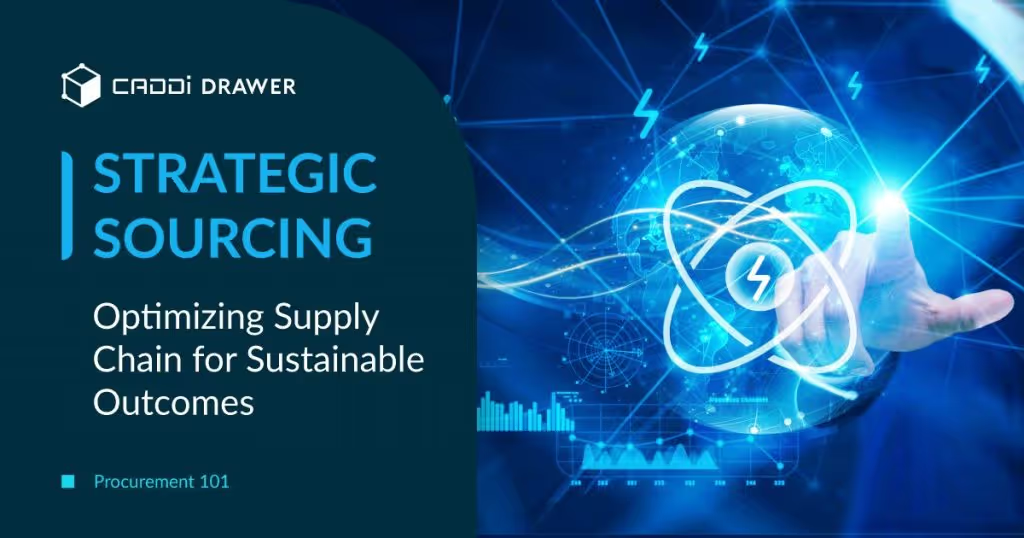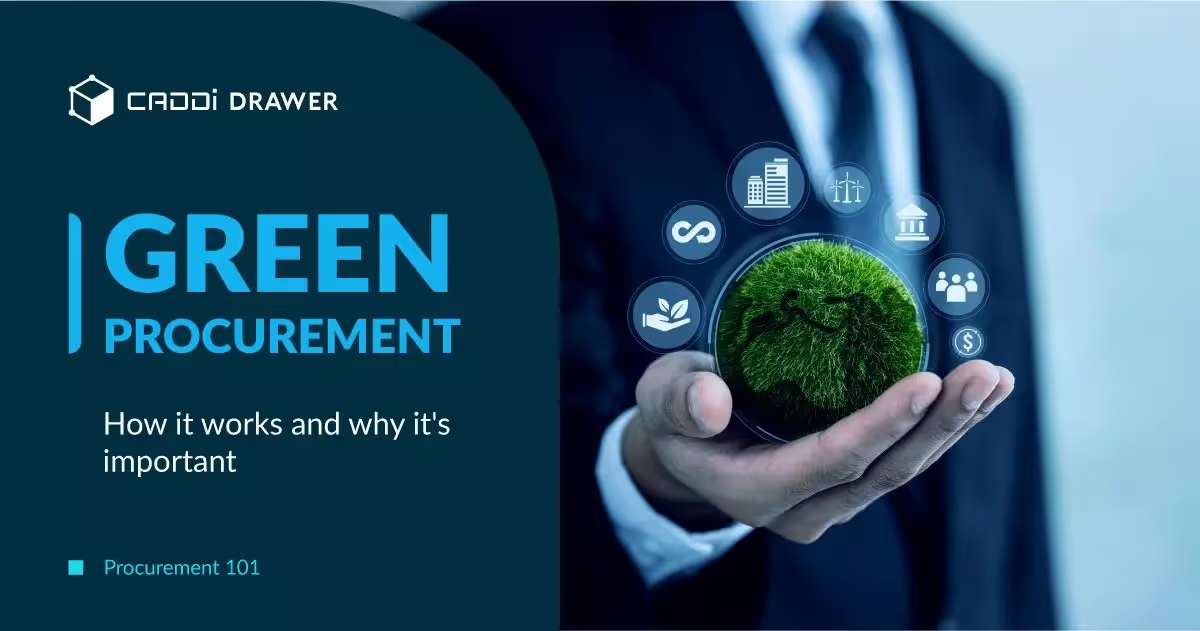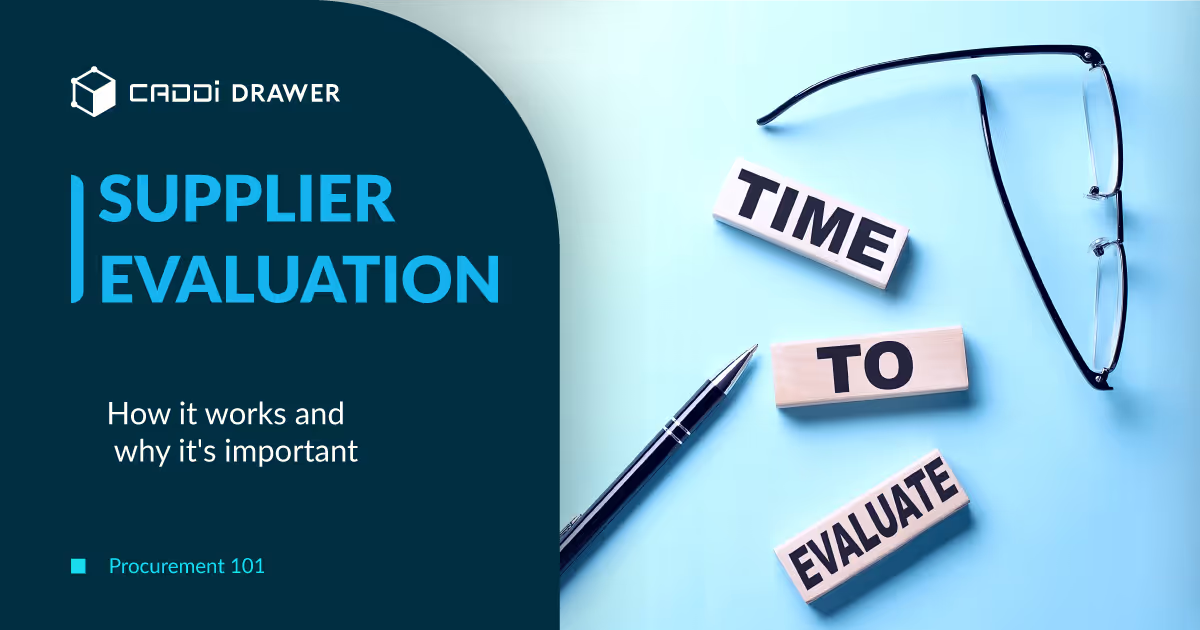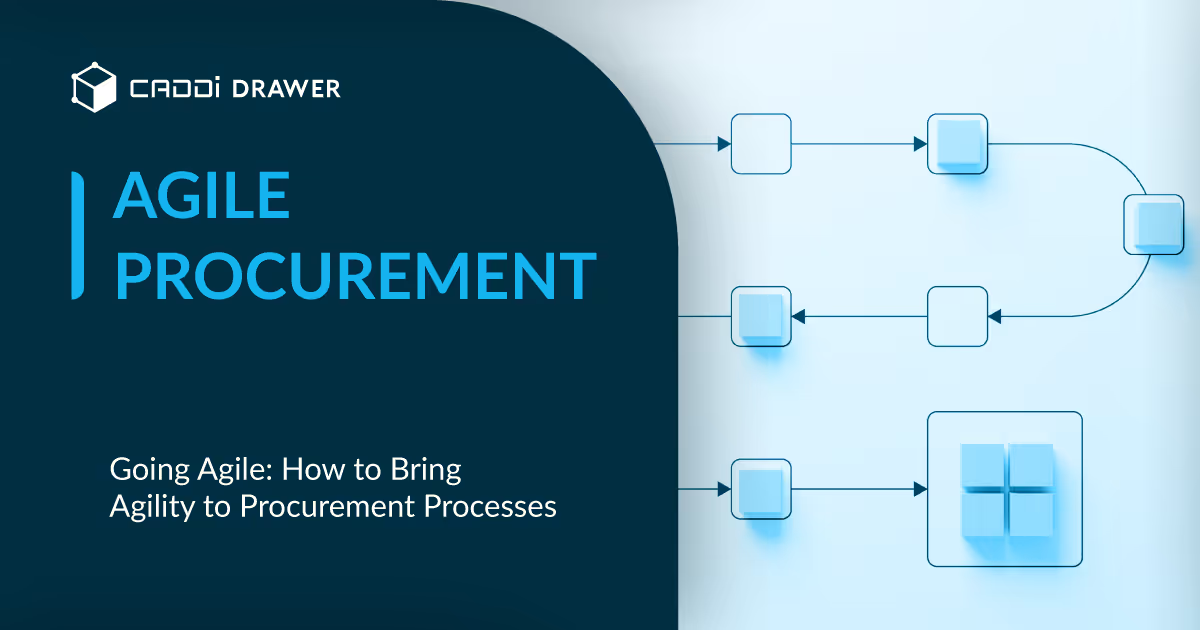Procurement Optimization: 7 Key Strategies to Slash Costs

Table of Contents

What is Procurement Optimization?
Procurement optimization refers to strategies and processes that maximize efficiency and value in procurement activities. With procurement making up a significant portion of expenses for many companies, optimizing procurement can lead to substantial cost savings and improved profitability.
The goal is to develop best practices that:
- Reduce maverick spending
- Improve supplier relationships
- Increase transparency
- Boost procurement productivity
By streamlining and automating tasks, centralizing data, leveraging analytics, and instituting proper checks and balances, organizations can better control spend while enabling procurement teams to focus on strategic priorities.
1. Assessing Current Processes
The first step in optimizing procurement is to thoroughly analyze current workflows and processes to identify inefficiencies, bottlenecks, or areas for improvement.
- Gather data on all current procurement processes, from requisition through payment. Map out each granular step, documenting manual tasks, systems used, and who is responsible for each step.
- Conduct stakeholder interviews with procurement team members, requestors, approvers, and other participants. Gather feedback on pain points and improvement ideas.
- Analyze spend data to identify the highest-cost or most frequent procurement categories. Focus process analysis there first. Drill down to identify root causes of any lags or blockages.
- Benchmark procurement metrics like cycle times, transaction costs, maverick spend rates against industry standards. Compare efficiency before and after technology enhancements.
Thoroughly documenting and analyzing current processes provides the necessary baseline and insights to guide optimization efforts.
2. Data-Driven Spend Analysis
Effectively managing procurement requires a data-driven approach to understand spending patterns and identify potential savings. Leverage spend analytics to gain visibility across the enterprise.
A thorough spend analysis involves:
– Collecting and cleansing data from purchase orders, invoices, expense reports, etc.
– Aggregating, categorizing and analyzing data to reveal insights
- Total spend by category
- Spend by supplier
- Spend by department/location
- Spend over time
- Compliance with contracts
Analyze KPIs for suppliers such as pricing trends, service levels, risk factors, and sustainability metrics. This allows segmenting suppliers and identifying opportunities to rationalize relationships.
Ongoing spend analytics provides the foundation for making data-driven decisions about procurement strategies, process improvements, and cost-reduction initiatives. Maintaining clean, comprehensive, and timely data is critical.
3. Supplier Relationship Management
Supplier relationships are critical to an optimized procurement strategy. By consolidating suppliers, building strategic partnerships, and leveraging supplier innovations, organizations can achieve significant cost savings and process improvements.
Consolidating Suppliers
Reducing the number of suppliers can streamline operations and reduce costs:
- Conduct spend analysis to identify duplicate spending across suppliers. Consolidate volume to fewer suppliers for increased negotiating leverage.
- Assess supplier performance and terminate underperforming partnerships. Focus on top-performing strategic suppliers.
- Use e-procurement tools and online catalogs to aggregate purchasing and transition to preferred suppliers.
- Coordinate purchasing across business units to avoid maverick spending.
Building Strategic Partnerships
Develop close partnerships with strategic suppliers:
- Collaborate on process improvements, cost reductions, quality control, and new product development.
- Provide incentives for performance. Strategic suppliers may offer lower pricing for increased volume.
- Share forecasting data so suppliers can better plan, manage inventory, and meet expectations.
- Work together to synchronize ordering, delivery, invoicing, and payment processes.
Leveraging Supplier Innovation
Leading suppliers are investing in emerging technologies and innovations that buyers can benefit from:
- Communicate business objectives and challenges to suppliers. Invite them to present solutions during RFPs and RFQs.
- Actively source and pilot new supplier technologies like inventory management systems, e-procurement tools, AI supply chain analytics.
- Give innovative suppliers preferential status. Be an early adopter of cutting-edge solutions from strategic partners.
- Provide feedback to suppliers and collaborate on refinement.
- Participate in supplier innovation days and visit supplier facilities to directly view new capabilities.
Optimizing supplier relationships through consolidation, partnership, and innovation relies on constant communication and alignment with top suppliers.
4. Automating Procurement Tasks
Automating repetitive procurement tasks can significantly increase efficiency and reduce costs. Implement software tools and platforms to streamline key steps in the procure-to-pay cycle:
e-Procurement Software
e-Procurement software centralizes and automates purchasing:
- Automated workflows for purchase requisitions, POs, approvals, receipt of goods, invoicing
- Integration with ERP systems
- Self-service catalogs for commonly purchased items
- Sourcing tools like eRFQs and eAuctions
- Contract management functionality
- Spend analytics and reporting
e-Procurement eliminates manual tasks like data entry while enforcing policies and providing spend visibility.
Electronic Invoicing
Electronic invoices (e-invoicing) removes the need for paper invoices. e-Invoicing solutions:
- Receive invoices digitally
- Validate and match them to POs
- Flow data directly into payables system
This eliminates manual data entry and speeds up invoice processing and payment.
Automated Payment Processing
Tools like virtual cards and ACH payments automate payment processing, saving time on issuing and reconciling checks. Payments can be triggered automatically based on invoices with pre-approved POs.
Contract Management Systems
Contract management systems centralize:
- Contract storage
- Deadlines
- Obligations management
- Analysis
Many have digital signature capabilities. This eliminates physical contract handling and ensures suppliers meet obligations.
Leveraging automation throughout the source-to-settle process allows procurement to focus on value-added tasks like strategic sourcing and supplier relationship management. This drives efficiency and compliance across the supply chain.
5. Centralizing Procurement Operations
Centralizing and consolidating procurement operations is key to optimization. Traditionally handled in a decentralized way across business units, centralizing and standardizing enables economies of scale and higher performance.
Approaches to centralizing procurement include:
Shared services models: A centralized procurement function serves the whole organization. Shared services consolidate procurers into dedicated centers of excellence for consistency, specialized skills, and reduced duplication.
Centers of procurement excellence: Procurement staff are brought together into a dedicated procurement center, focusing expertise, technology, and analytics.
Global process standards: Common processes, data formats, and policies enable central oversight even with distributed teams.
Centralized technology: E-procurement and P2P software connect procurement data across the organization for transparency, control, and standardized workflows.
Consolidated supplier base: Reducing suppliers and channeling spend through preferred ones increases leverage and pricing power. A centralized view enables supplier base optimization.
Benefits of centralizing procurement include:
- Increased visibility and control over spending
- Leveraging economies of scale for better pricing
- Reduced maverick and off-contract spending
- Higher productivity and efficiency
- Consistent processes and supplier management
- Better data, analytics, and insights
- Reduced costs through eliminating duplicated efforts
- Increased value delivery across the organization
A centralized, professional procurement group allows strategically tackling areas like total cost reduction, supply chain optimization, and risk management.
6. Improving Procure-to-Pay Processes
The procure-to-pay (P2P) process manages procurement transactions from purchase requisition through supplier payment. Streamlining and optimizing the P2P workflow is crucial for reducing costs, enhancing efficiency, and maintaining compliance:
- Map P2P workflows to identify unnecessary complexities, delays, inefficiencies.
- Reduce maverick spending through enforced policies, system controls, approval workflows, and training.
- Enforce procurement policies through integrated rules to automatically ensure compliance.
- Centralize data for visibility into spend and performance metrics.
- Automate processes where possible to streamline manual steps (e.g. online ordering, EDI transmission, e-invoicing).
- Optimize approvals, eliminating unnecessary or redundant ones that delay processes.
- Improve supplier integration through P2P system onboarding, smooth data exchange, self-service portals.
- Add dynamic reporting and real-time spend dashboards into P2P systems.
Optimizing and digitizing procure-to-pay cuts costs, improves efficiency, provides spend insights, and maintains compliance with procurement policies.
7. Developing Procurement Analytics
Procurement analytics are essential for gaining insights, measuring performance, and identifying optimization opportunities:
Defining KPIs
- Determine important metrics based on procurement goals (e.g. spend under management, cycle times, supplier performance, savings generated).
- Use specific, measurable, achievable, relevant, time-bound KPIs clearly connected to objectives.
- Consider cost savings, supplier quality, contract compliance, efficiency, productivity, stakeholder satisfaction.
Analyzing Spend Data
- Use spend analysis to segment expenditures, identify top categories, analyze suppliers, spotlight risks.
- Gauge contract and policy compliance. Identify maverick spend outside preferred suppliers.
- Pinpoint opportunities for demand management, specification improvement, strategic sourcing.
Creating Dashboards
- Consolidate key metrics, KPIs, visualizations into interactive dashboards.
- Enable drill-down to underlying data. Provide self-service access.
- Continuously refine metrics and dashboards based on insights and evolving needs.
Robust analytics give procurement multidimensional visibility into spending, suppliers, processes – driving data-backed decisions and ongoing improvements.
And if you can elevate and evolve from procurement analysis to the level of procurement intelligence, you should be able to dramatically improve the results achieved through procurement optimization.
Conclusion
By leveraging these seven key strategies – process assessment, spend analysis, supplier management, automation, centralization, P2P optimization, and analytics – organizations can transform procurement into a strategic, data-driven function. Continuously refining and elevating procurement practices will drive cost savings, efficiency gains, and competitive advantage in an increasingly complex business landscape.
What is Procurement Optimization?
Procurement optimization refers to strategies and processes that maximize efficiency and value in procurement activities. With procurement making up a significant portion of expenses for many companies, optimizing procurement can lead to substantial cost savings and improved profitability.
The goal is to develop best practices that:
- Reduce maverick spending
- Improve supplier relationships
- Increase transparency
- Boost procurement productivity
By streamlining and automating tasks, centralizing data, leveraging analytics, and instituting proper checks and balances, organizations can better control spend while enabling procurement teams to focus on strategic priorities.
1. Assessing Current Processes
The first step in optimizing procurement is to thoroughly analyze current workflows and processes to identify inefficiencies, bottlenecks, or areas for improvement.
- Gather data on all current procurement processes, from requisition through payment. Map out each granular step, documenting manual tasks, systems used, and who is responsible for each step.
- Conduct stakeholder interviews with procurement team members, requestors, approvers, and other participants. Gather feedback on pain points and improvement ideas.
- Analyze spend data to identify the highest-cost or most frequent procurement categories. Focus process analysis there first. Drill down to identify root causes of any lags or blockages.
- Benchmark procurement metrics like cycle times, transaction costs, maverick spend rates against industry standards. Compare efficiency before and after technology enhancements.
Thoroughly documenting and analyzing current processes provides the necessary baseline and insights to guide optimization efforts.
2. Data-Driven Spend Analysis
Effectively managing procurement requires a data-driven approach to understand spending patterns and identify potential savings. Leverage spend analytics to gain visibility across the enterprise.
A thorough spend analysis involves:
– Collecting and cleansing data from purchase orders, invoices, expense reports, etc.
– Aggregating, categorizing and analyzing data to reveal insights
- Total spend by category
- Spend by supplier
- Spend by department/location
- Spend over time
- Compliance with contracts
Analyze KPIs for suppliers such as pricing trends, service levels, risk factors, and sustainability metrics. This allows segmenting suppliers and identifying opportunities to rationalize relationships.
Ongoing spend analytics provides the foundation for making data-driven decisions about procurement strategies, process improvements, and cost-reduction initiatives. Maintaining clean, comprehensive, and timely data is critical.
3. Supplier Relationship Management
Supplier relationships are critical to an optimized procurement strategy. By consolidating suppliers, building strategic partnerships, and leveraging supplier innovations, organizations can achieve significant cost savings and process improvements.
Consolidating Suppliers
Reducing the number of suppliers can streamline operations and reduce costs:
- Conduct spend analysis to identify duplicate spending across suppliers. Consolidate volume to fewer suppliers for increased negotiating leverage.
- Assess supplier performance and terminate underperforming partnerships. Focus on top-performing strategic suppliers.
- Use e-procurement tools and online catalogs to aggregate purchasing and transition to preferred suppliers.
- Coordinate purchasing across business units to avoid maverick spending.
Building Strategic Partnerships
Develop close partnerships with strategic suppliers:
- Collaborate on process improvements, cost reductions, quality control, and new product development.
- Provide incentives for performance. Strategic suppliers may offer lower pricing for increased volume.
- Share forecasting data so suppliers can better plan, manage inventory, and meet expectations.
- Work together to synchronize ordering, delivery, invoicing, and payment processes.
Leveraging Supplier Innovation
Leading suppliers are investing in emerging technologies and innovations that buyers can benefit from:
- Communicate business objectives and challenges to suppliers. Invite them to present solutions during RFPs and RFQs.
- Actively source and pilot new supplier technologies like inventory management systems, e-procurement tools, AI supply chain analytics.
- Give innovative suppliers preferential status. Be an early adopter of cutting-edge solutions from strategic partners.
- Provide feedback to suppliers and collaborate on refinement.
- Participate in supplier innovation days and visit supplier facilities to directly view new capabilities.
Optimizing supplier relationships through consolidation, partnership, and innovation relies on constant communication and alignment with top suppliers.
4. Automating Procurement Tasks
Automating repetitive procurement tasks can significantly increase efficiency and reduce costs. Implement software tools and platforms to streamline key steps in the procure-to-pay cycle:
e-Procurement Software
e-Procurement software centralizes and automates purchasing:
- Automated workflows for purchase requisitions, POs, approvals, receipt of goods, invoicing
- Integration with ERP systems
- Self-service catalogs for commonly purchased items
- Sourcing tools like eRFQs and eAuctions
- Contract management functionality
- Spend analytics and reporting
e-Procurement eliminates manual tasks like data entry while enforcing policies and providing spend visibility.
Electronic Invoicing
Electronic invoices (e-invoicing) removes the need for paper invoices. e-Invoicing solutions:
- Receive invoices digitally
- Validate and match them to POs
- Flow data directly into payables system
This eliminates manual data entry and speeds up invoice processing and payment.
Automated Payment Processing
Tools like virtual cards and ACH payments automate payment processing, saving time on issuing and reconciling checks. Payments can be triggered automatically based on invoices with pre-approved POs.
Contract Management Systems
Contract management systems centralize:
- Contract storage
- Deadlines
- Obligations management
- Analysis
Many have digital signature capabilities. This eliminates physical contract handling and ensures suppliers meet obligations.
Leveraging automation throughout the source-to-settle process allows procurement to focus on value-added tasks like strategic sourcing and supplier relationship management. This drives efficiency and compliance across the supply chain.
5. Centralizing Procurement Operations
Centralizing and consolidating procurement operations is key to optimization. Traditionally handled in a decentralized way across business units, centralizing and standardizing enables economies of scale and higher performance.
Approaches to centralizing procurement include:
Shared services models: A centralized procurement function serves the whole organization. Shared services consolidate procurers into dedicated centers of excellence for consistency, specialized skills, and reduced duplication.
Centers of procurement excellence: Procurement staff are brought together into a dedicated procurement center, focusing expertise, technology, and analytics.
Global process standards: Common processes, data formats, and policies enable central oversight even with distributed teams.
Centralized technology: E-procurement and P2P software connect procurement data across the organization for transparency, control, and standardized workflows.
Consolidated supplier base: Reducing suppliers and channeling spend through preferred ones increases leverage and pricing power. A centralized view enables supplier base optimization.
Benefits of centralizing procurement include:
- Increased visibility and control over spending
- Leveraging economies of scale for better pricing
- Reduced maverick and off-contract spending
- Higher productivity and efficiency
- Consistent processes and supplier management
- Better data, analytics, and insights
- Reduced costs through eliminating duplicated efforts
- Increased value delivery across the organization
A centralized, professional procurement group allows strategically tackling areas like total cost reduction, supply chain optimization, and risk management.
6. Improving Procure-to-Pay Processes
The procure-to-pay (P2P) process manages procurement transactions from purchase requisition through supplier payment. Streamlining and optimizing the P2P workflow is crucial for reducing costs, enhancing efficiency, and maintaining compliance:
- Map P2P workflows to identify unnecessary complexities, delays, inefficiencies.
- Reduce maverick spending through enforced policies, system controls, approval workflows, and training.
- Enforce procurement policies through integrated rules to automatically ensure compliance.
- Centralize data for visibility into spend and performance metrics.
- Automate processes where possible to streamline manual steps (e.g. online ordering, EDI transmission, e-invoicing).
- Optimize approvals, eliminating unnecessary or redundant ones that delay processes.
- Improve supplier integration through P2P system onboarding, smooth data exchange, self-service portals.
- Add dynamic reporting and real-time spend dashboards into P2P systems.
Optimizing and digitizing procure-to-pay cuts costs, improves efficiency, provides spend insights, and maintains compliance with procurement policies.
7. Developing Procurement Analytics
Procurement analytics are essential for gaining insights, measuring performance, and identifying optimization opportunities:
Defining KPIs
- Determine important metrics based on procurement goals (e.g. spend under management, cycle times, supplier performance, savings generated).
- Use specific, measurable, achievable, relevant, time-bound KPIs clearly connected to objectives.
- Consider cost savings, supplier quality, contract compliance, efficiency, productivity, stakeholder satisfaction.
Analyzing Spend Data
- Use spend analysis to segment expenditures, identify top categories, analyze suppliers, spotlight risks.
- Gauge contract and policy compliance. Identify maverick spend outside preferred suppliers.
- Pinpoint opportunities for demand management, specification improvement, strategic sourcing.
Creating Dashboards
- Consolidate key metrics, KPIs, visualizations into interactive dashboards.
- Enable drill-down to underlying data. Provide self-service access.
- Continuously refine metrics and dashboards based on insights and evolving needs.
Robust analytics give procurement multidimensional visibility into spending, suppliers, processes – driving data-backed decisions and ongoing improvements.
And if you can elevate and evolve from procurement analysis to the level of procurement intelligence, you should be able to dramatically improve the results achieved through procurement optimization.
Conclusion
By leveraging these seven key strategies – process assessment, spend analysis, supplier management, automation, centralization, P2P optimization, and analytics – organizations can transform procurement into a strategic, data-driven function. Continuously refining and elevating procurement practices will drive cost savings, efficiency gains, and competitive advantage in an increasingly complex business landscape.
Ready to see CADDi Drawer in action? Get a personalized demo.
Subscribe to our Blog!
Related Resources












.svg)



.svg)
.svg)
.svg)


